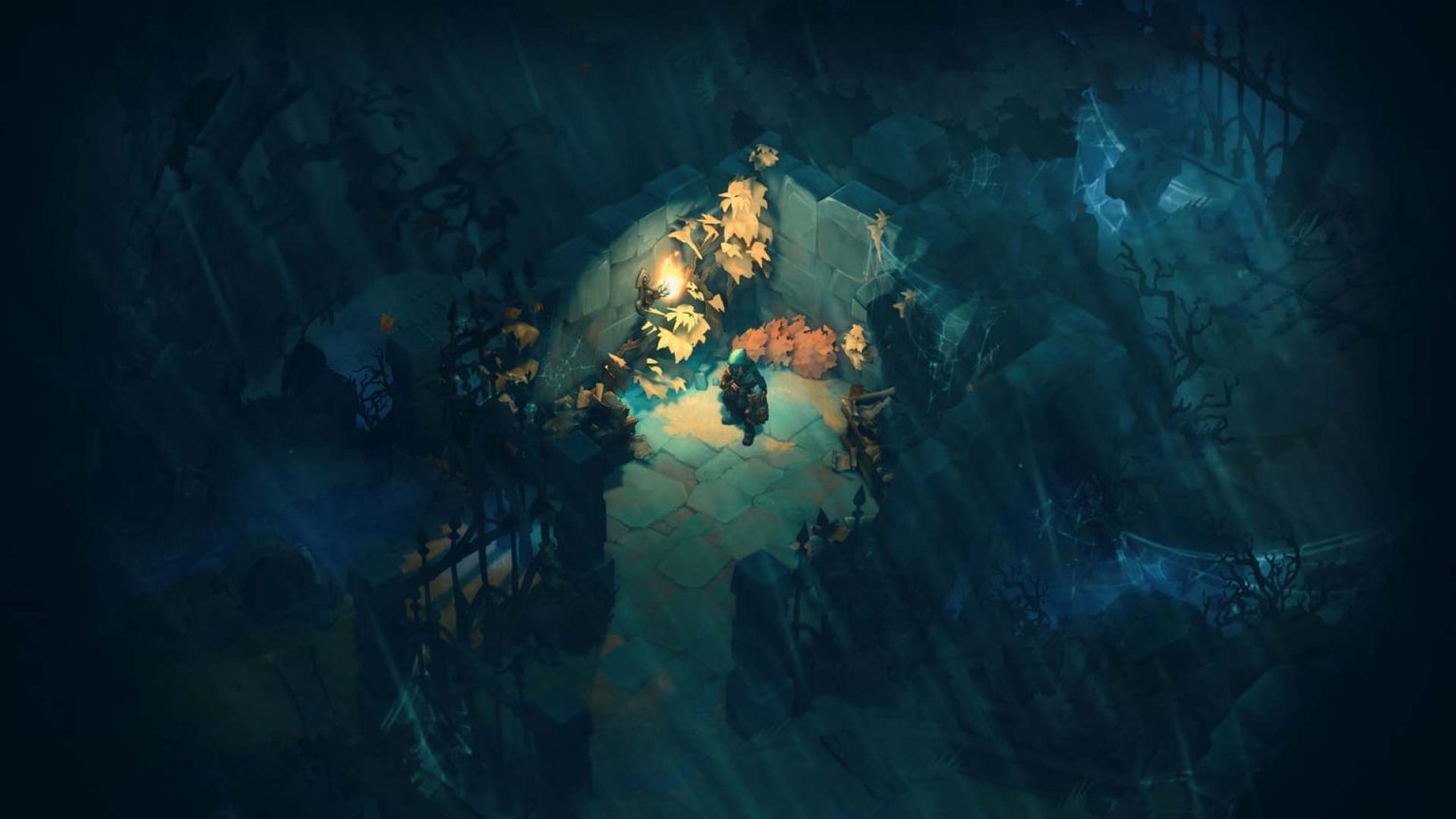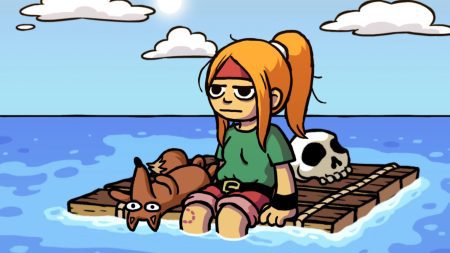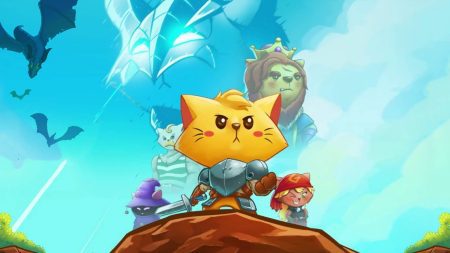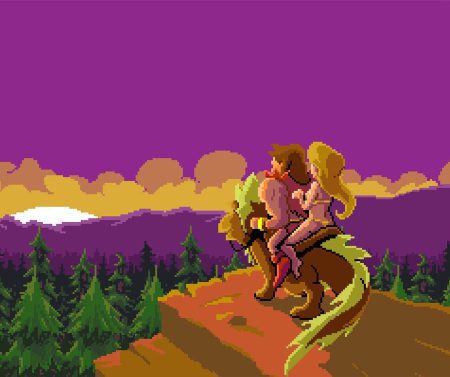Like the Good Olde Days
It would be easy to dismiss Battle Chasers: Nightwar as another generic, indie attempt at a JRPG, based on its title. It would also be a mistake to do so.

For the unfamiliar, Battle Chasers: Nightwar is the first game developed by Austin-based development studio Airship Syndicate. It’s also notable for being a continuation (of sorts) of creative director Joe Madureira’s long-dormant fantasy comic, Battle Chasers.
But Nightwar is less for fans of Madureira’s comic and more for fans of traditional JPRGs. A love letter to the genre, it harkens back to SNES era turn-based gameplay, with some (albeit not enough) modernizations to bring up to date to present day. While it shares some flaws with its source material, Nightwar’s complex battle system and beautifully drawn world were enough to keep me engaged for dozens of hours.
Let the Nightwar Begin
Nightwar brings some unique twists to the traditional turn-based-combat system. Characters can perform Actions or Abilities; the former cost nothing and the latter cost mana. Actions are instant. Abilities cost mana and can take longer to cast, which means using an ability may move the character “down” in the attack order. So far, straightforward.
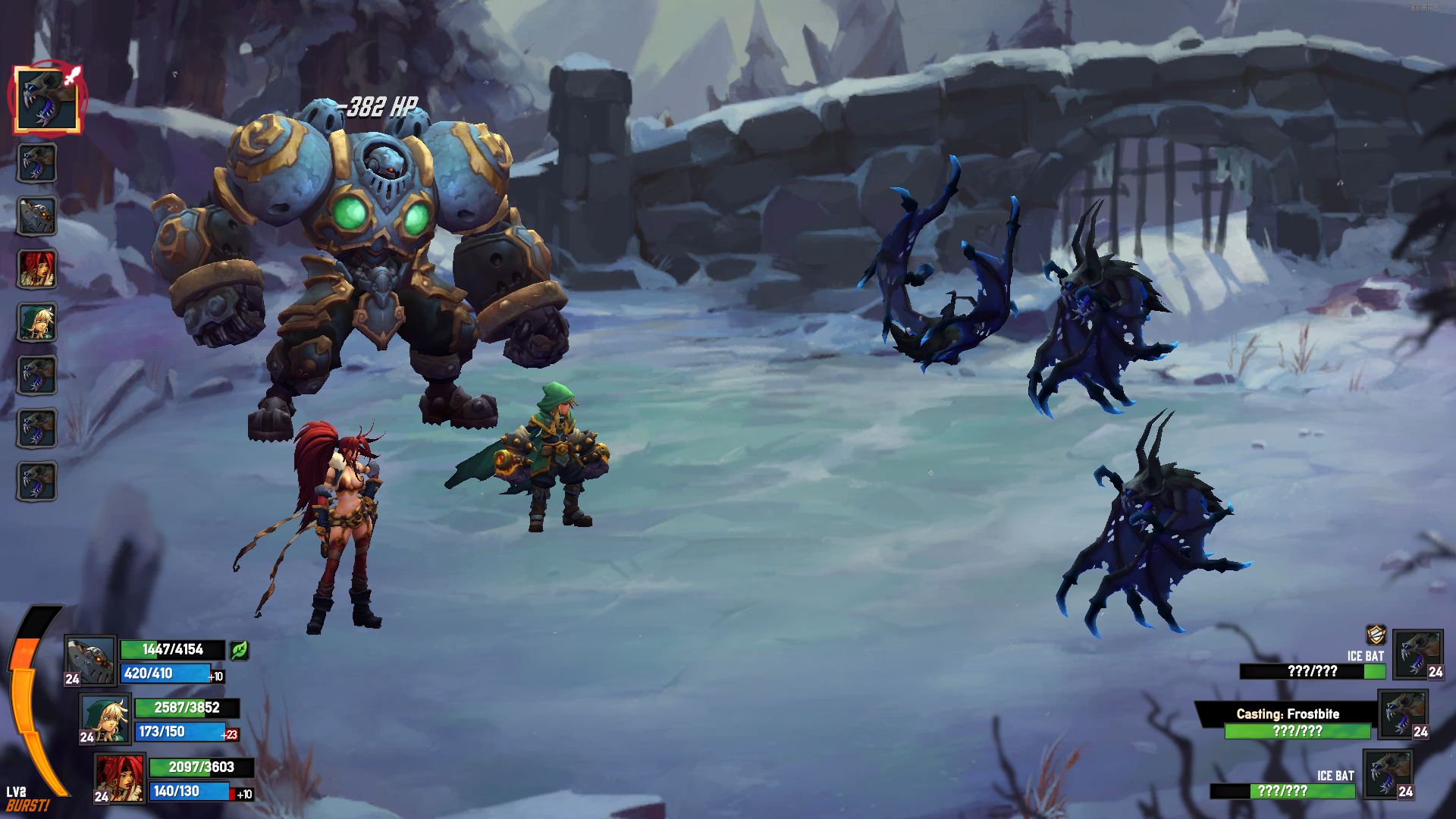
Here Nightwar introduces its first unique mechanic: Overcharge. Characters can perform Actions (such as attacking or defending), which in turn generates Overcharge, filling a separate mana bar. Overcharge makes it so that you can use Abilities often without dipping into your “actual” mana bar, making combat feel much less conservative than in other RPGs. Certain abilities can make use of Overcharge as well, from boosting damage to raising critical rates based on the amount of Overcharge you have.
The second mechanic is the Burst meter. Actually functioning similarly to the Super Combo meter from Street Fighter, Burst builds up whenever you perform a command in battle. By using up to 3 meters of Burst, each character has a unique attack they can unleash upon enemies. Burst builds very quickly, and I found myself using Bursts multiple times per battle for tougher skirmishes.
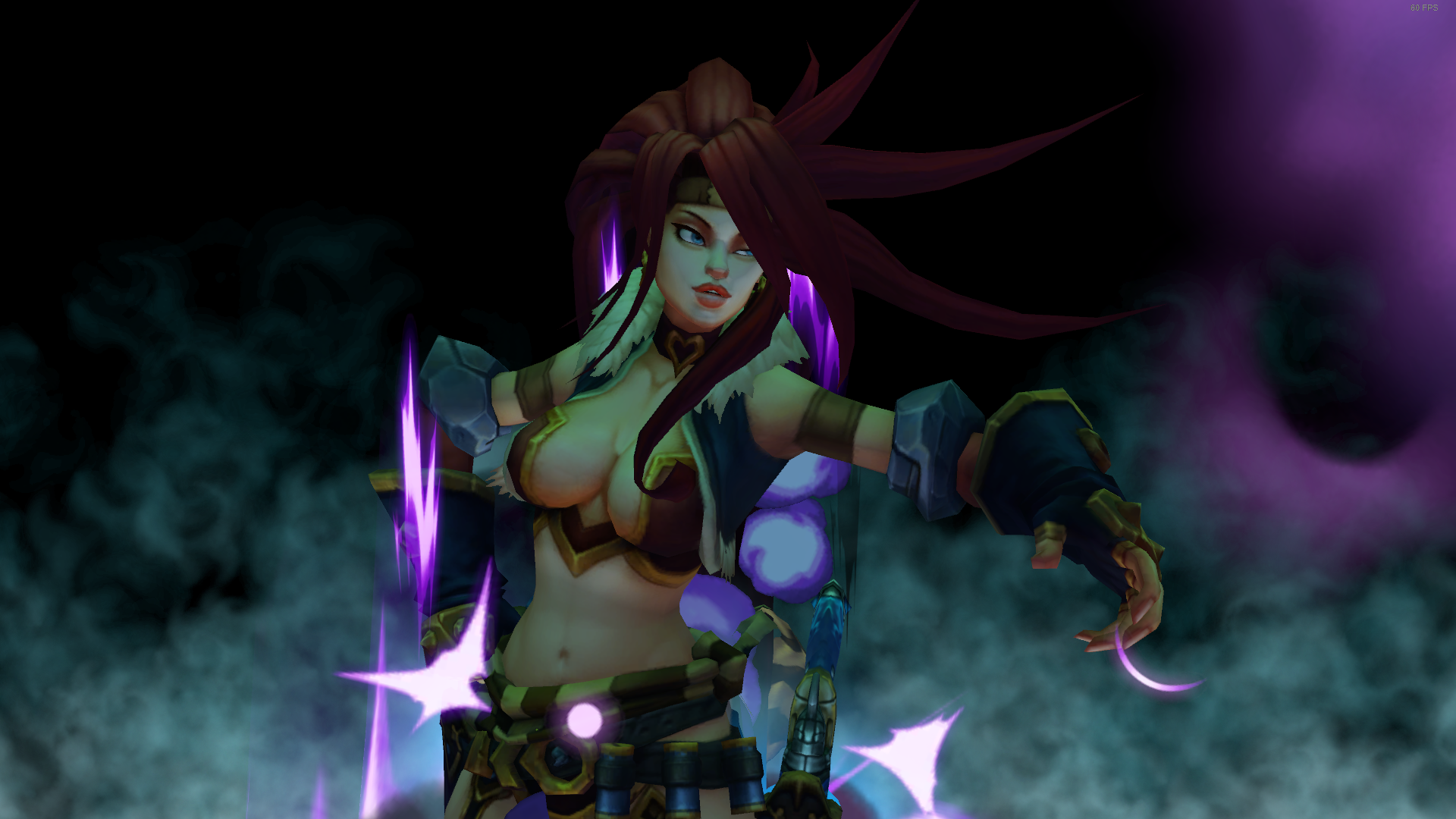
These two mechanics make Nightwar’s battles seem both faster and more complex than your typical JRPG fare. Constantly juggling Overcharge to make the most efficient use of mana against standard enemies while using Battle Bursts makes combat feel varied and frenetic in the best way. Combine that with the huge array of Abilities each character will come to obtain, and the potential for synergy makes for a gameplay feedback loop that is deep and never boring.
Pace and Space
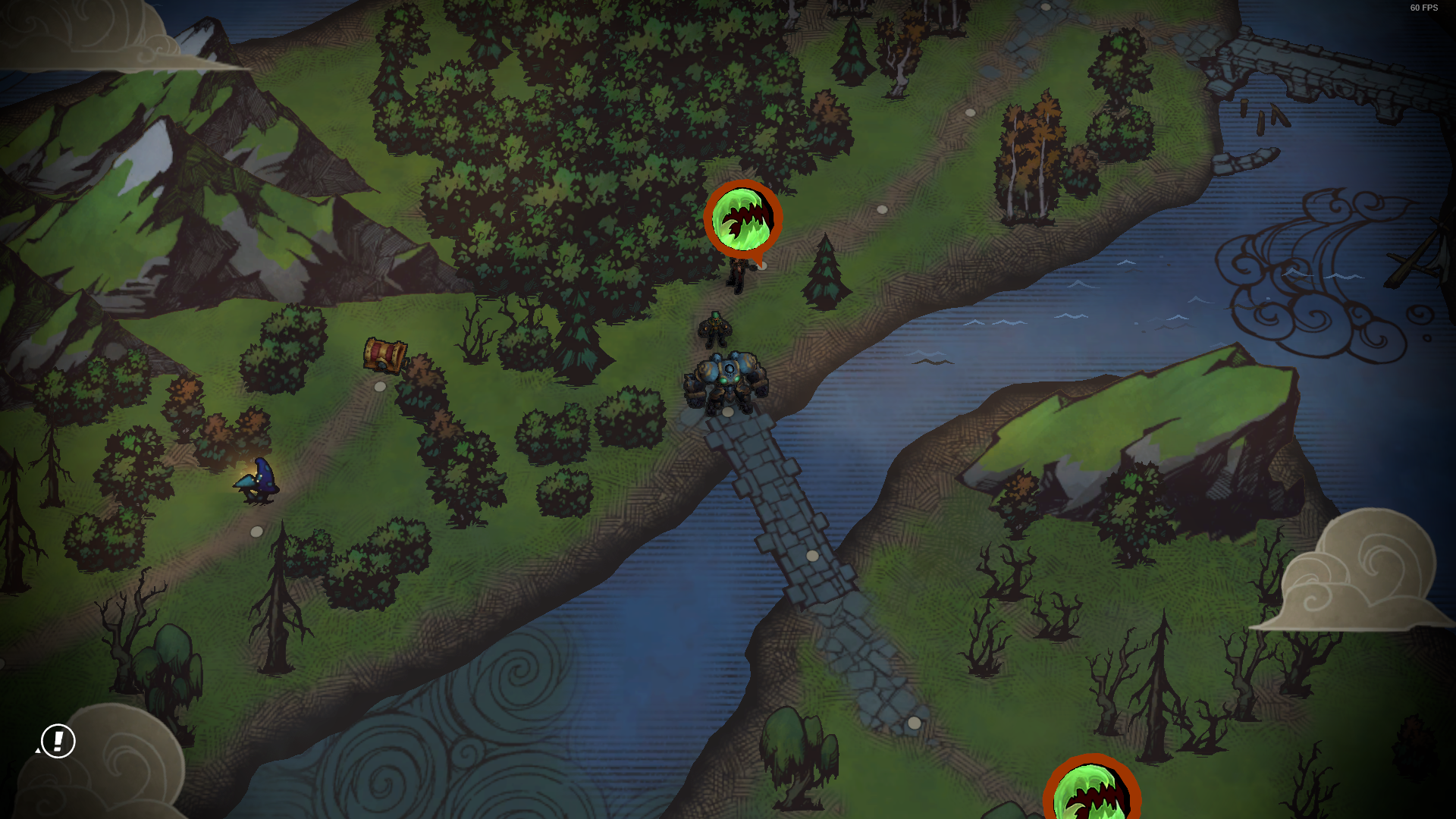
Nightwar’s gameplay has two basic stages, excluding combat: overworld traversal and dungeon traversal. The overworld has its share of secrets, mostly in the form of hidden loot. There isn’t much than that, save the occasional overworld skirmish. You move a tad too slow on the map for my liking, but plentiful warp points mitigate that somewhat.

Dungeon traversal is more interesting, where you can actually explore areas. You can use character-specific Hero Skills in dungeons, which range from free healing, stealth to avoid enemies, or physical and ranged attacks that can give you the jump on enemies. The dungeons never become too complex, with most puzzles being very solvable. With modular difficulty levels and procedural generation, these dungeons come with far more replay value than your typical JRPG and I ran through each dungeon at least twice.
Where’s the Booty

Weapons, accessories, and armor are also plentiful in this world, and while I wouldn’t say that Nightwar is necessarily loot-driven, there are many different enchantments and effects available that can spice up your battles. The crafting and enchanting systems in place are nothing groundbreaking. But they’re functional, and didn’t detract from the experience.
The biggest gameplay-related problem is that characters do not all share experience— characters that aren’t in your party gain no experience, so you have to rotate party members Pokémon style if you want them to be all useful. I tried to keep this up, but around the halfway point of the game, it was taking too long and the utility wasn’t worth it. I ended up sticking with the same team for the final 20~ hours of the game. Frankly, I felt this was a huge mistake on the developer’s part– the game would feel a lot less restrictive regarding party compositions if all my characters leveled equally, and I would have been able to use characters like Garrison or Knolan, who ended up largely benched.
The above complaints aside, the difficulty curve scaled very well. You’re given the choice, on your first attempt, to play through dungeons on Normal or Heroic. I chose Heroic for all dungeons and suffered only 5 or 6 game overs doing normal story content. Game overs are also extremely forgiving, simply sending you back to the inn and taking a small portion of your money (another Pokémon-esque touch), which is a nice modern feature.
Hero’s Journey
Unfortunately, the story and writing is much less impressive. The plot is so bland as to be completely forgettable. Our protagonists from the comic are traveling to the Crescent Isle because Knolan wants to investigate mana. There’s a demon, a vampire, and a sorceress doing evil things because they’re evil. The antagonists have no personal connection to our heroes, either. Our heroes are only involved because…that’s what heroes do? Meddle in evildoers plans, I suppose. It’s a shame because I found the animated, comic-book cutscenes to be very enjoyable with a great sense of style.

Fans of the source material hoping to see more light shed on the events of the comic will be disappointed. The number of meaningful interactions between our heroes is surprisingly scant. Perhaps that’s intentional, to keep Madureira’s options open for when Battle Chasers supposedly returns later this year.
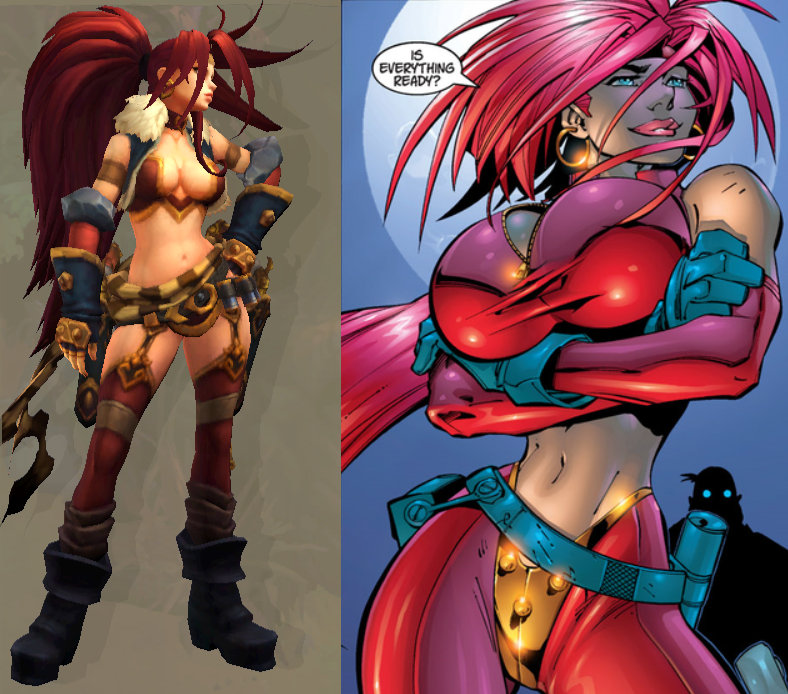
The peak of the game’s writing would be the tavern conversations. These conversations are where fans starving for any hint of the Battle Chasers comic should go. There are fresh new pairings, hints at days past, and some genuinely heartwarming talks here, and it made me wish for more. Additionally, the voice acting is surprisingly great for a Kickstarted game, which makes the lack of dialogue even more saddening.
But honestly, the story is so throwaway, I didn’t find that it really detracted from the game in any way. It’s more just that it’s disappointing that a game so fun couldn’t have a story to match.
At Least I Look Good
The presentation of the game, though, is excellent. For semi-procedural generation, the dungeons have nice amounts of flair and detail. The steampunk fantasy flair is unique and while it isn’t logical, it looks cool. The models aren’t as high quality, but they rarely show up. Meanwhile, the character artworks used in dialogue and cutscenes have visual pop and look great.
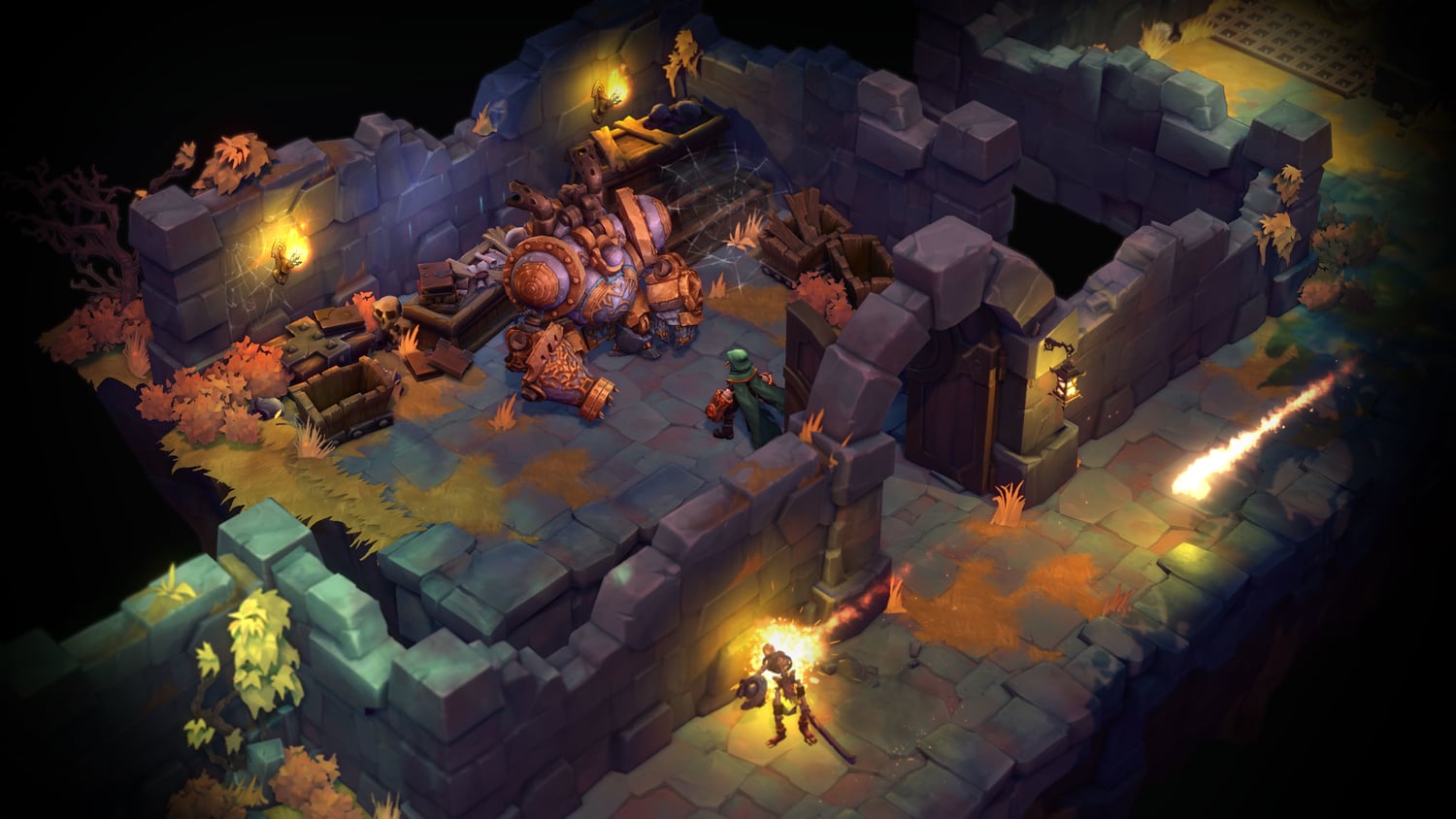
The soundtrack, dually composed by Jesper Kyd and Colin Powell has a low-key excellence. It’s surprisingly subdued, and while I expected something more rambunctious from Battle Chasers, the diversity of sounds and the haunting atmosphere somehow fits well (you can listen to some of the tracks here).
Some Nitpicks
The game has some other minor flaws. The quest log system isn’t perfect—it feels like the secondary quest log is almost never used meaningfully. Given the amount of sidequests, it would have been nice to have a better quest log. Overworld map traversal is entirely too slow, as mentioned previously.

I had some notable screen tearing during overworld traversal, despite the game running at a rock-solid 60FPS. I also encountered some minor graphical and audio glitches, such as audio from cutscenes continuing to bleed into subsequent gameplay.
Final Gameplay Statistics
I thought it would be fun to write down some relevant statistics about my playthrough of the game.
Platform: Windows
Hours logged: 47 (35-40 hours for the main story, 5+ hours on postgame content).
New Game+: it exists, but I haven’t touched it yet.
Sidequests: 6/7 boss monster hunts completed, 4/6 final weapons forged
Achievements: 40/45
Final Thoughts
It’s hard to call any JRPG “great” when it so wholly lacks an interesting story of any sort, but Battle Chasers: Nightwar comes pretty damn close. Carried by its style, set in a strange, foreign, charming world, with good music and a great core gameplay loop, Nightwar is a great indie-priced game for fans of classic JRPGs.
Score: 8.3/10
Other reviews to check out:
Mario + Rabbids: Kingdom Battle
Huge video game, comic book, and anime fan. Spends way too much time watching things he doesn’t like. Hates Zack Snyder. Mains Falco.


